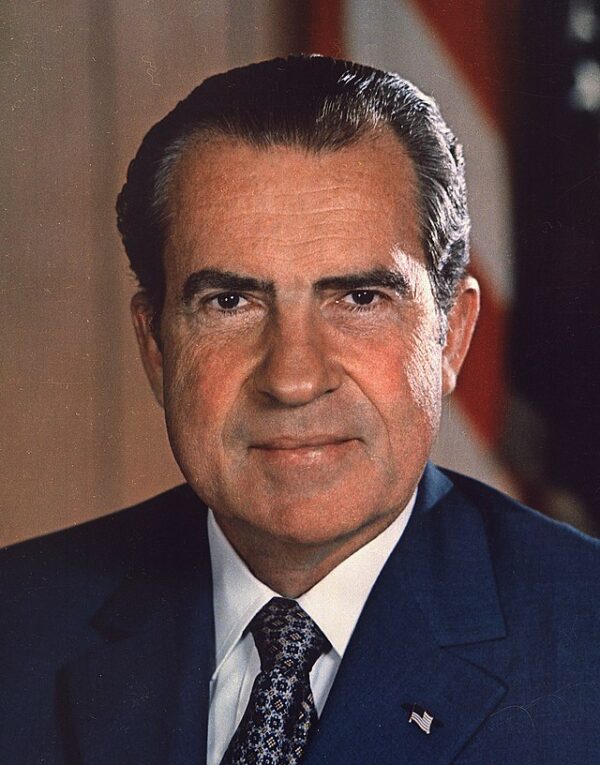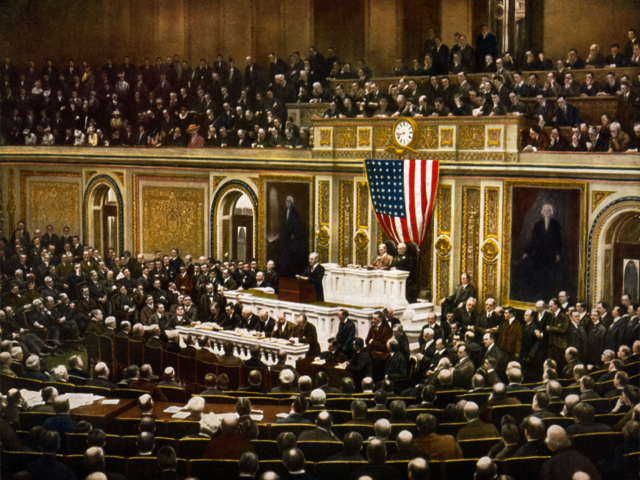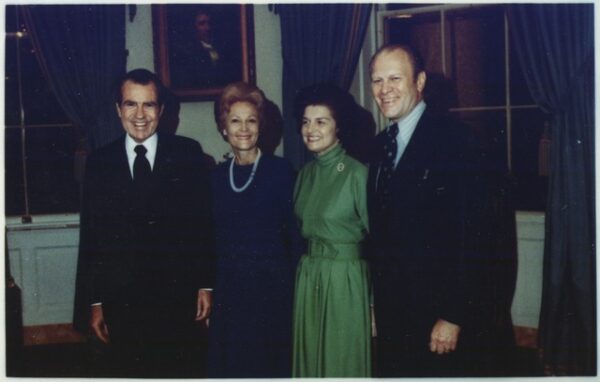On June 20, 1972, the most famous, or infamous, recording in White House history was created by President Richard Nixon and his chief of staff, H.R. Halderman in the Oval Office.
At 2:30 in the morning a few days before,” The Washington Post recalls, “five men were arrested while attempting to plant electronic surveillance devices in the Democratic National Committee headquarters, in the Watergate office building in Washington. On June 19, the Washington Post published a story by Bob Woodward and Carl Bernstein revealing that one of the five men was James McCord, who was a security contractor with President Nixon’s Committee to Re-elect the President (CREEP).
The next day, President Nixon met with his Chief of Staff, H.R. Haldeman, at about 11:30 a.m.
By the Spring of 1973, the Watergate coverup had begun to unravel. Haldeman resigned on April 30, replaced as Chief of Staff by Alexander Haig. On May 17, a Senate Select Committee on Watergate began hearings. Chairman of the Committee was North Carolina Democrat Sam Ervin, a lawyer who had a long-established record as a defender of civil liberties. Senate Majority Leader Mike Mansfield chose Ervin to head the committee because his integrity was respected on both sides of the aisle. The ranking Republican was Howard Baker of Tennessee, who would become Senate Minority Leader in 1977, then Majority Leader in 1981-84 with the Reagan landslide, and eventually serve as President Reagan’s Chief of Staff in 1987-88. Ervin and Baker set the constructive tone for the Committee, which focused on serious investigation, rather than partisan attacks on either side.
President Nixon had been using a voice-activated tape recording system for all Oval Office conversations, White House aide Alexander Butterfield revealed to the Senate on July 16, 1973. Presidents since Truman had recorded some conversations, but Nixon’s recording of everything was unique. Two days after Butterfield’s revelation, the taping system was dismantled, and the tapes put under Haig’s custody.”
When Congress asked for the tapes from June 20, believing they had found the smoking gun tying the presidnet to the Watergate Break-in, they were shocked to learn that just over 18 minutes were missing from that day. The revelation caused an uproar, but the president refused to hand them over, citing executive privilege. He instead offered written transcripts and an explanation for what was missing.
According to President Nixon’s secretary Rose Mary Woods, “on September 29, 1973, she was reviewing a tape of the June 20, 1972 recordings, when she made “a terrible mistake” during transcription. While playing the tape on a Uher 5000, she answered a phone call. Reaching for the Uher 5000 stop button, she said that she mistakenly hit the button next to it, the record button. For the duration of the phone call, about five minutes, she kept her foot on the device’s pedal, causing a five-minute portion of the tape to be rerecorded. When she listened to the tape, the gap had grown to 18+1⁄2 minutes. She later insisted that she was not responsible for the remaining 13 minutes of buzz,” explains one outlet.
“The contents missing from the recording remain unknown, though the gap occurs during a conversation between Nixon and H. R. Haldeman three days after the Watergate break-in,” writes The History Channel. “Nixon claimed not to know the topics discussed during the gap. Haldeman’s notes from the meeting show that among the topics of discussion were the arrests at the Watergate Hotel. White House lawyers first heard of the gap on the evening of November 14, 1973, and Judge Sirica, who had issued the subpoenas for the tapes, was not told until November 21, after the president’s attorneys had decided that there was “no innocent explanation” they could offer.
Woods was asked to demonstrate the position in which she was sitting when the accident occurred. Seated at a desk, she reached far back over her left shoulder for a telephone as her foot applied pressure to the pedal controlling the transcription machine. Her posture during the demonstration, dubbed the ‘Rose Mary Stretch’, caused many political commentators to question the validity of the explanation.”
The investigation into the missing tapes would last another ten months.
By July 30, 1974, the White House ran out of ways out and the presidency was doomed. “Under coercion from the Supreme Court, Nixon finally released the Watergate tapes. On August 5, transcripts of the recordings were released, including a segment in which the president was heard instructing Haldeman to order the FBI to halt the Watergate investigation. Three days later, Nixon announced his resignation.”





